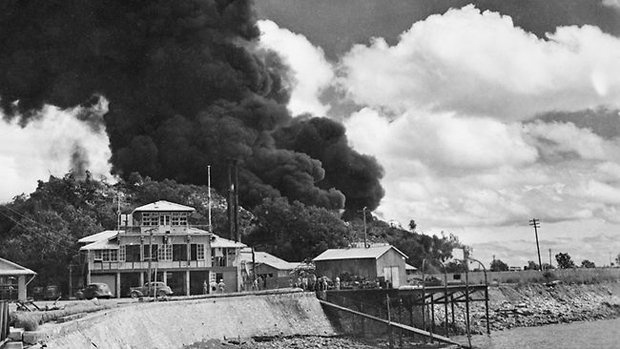Defending Darwin: Australia’s WWII front line

PETTY OFFICER HAJIME TOYOSHIMA was no novice at surprise attacks. The Japanese ‘Zero’ fighter pilot and his plane had flown in the 7 December, 1941 bombing of Pearl Harbor. A little more than two months later, Toyoshima steered his fighter towards Darwin in a flotilla of 188 aircraft.
It was 19 February 1942. The Japanese raiders struck just before 10 a.m., bombing and strafing the town and harbour, sinking eight ships and killing more than 250 people. Among them, famously, were nine civilian staff at Darwin Post Office, including post-master Hurtle Bald, his wife Alice and their daughter Iris.
“Most civilians were evacuated from Darwin in December 1941 and January ’42, and just about all of the women and children had gone,” says Peter Radtke, president of the Aviation Historical Society of the Northern Territory. “But people were needed to run the essential services, and that’s why there were staff at the post office.”
Toyoshima was one of few Japanese airmen not to make it safely away. It’s thought that a .303 rifle round pierced his plane’s oil tank. Toyoshima made a forced landing on Melville Island, where he was captured by Aboriginal people, and eventually sent to the prisoner-of-war camp at Cowra, NSW. There he became one of World War II’s intriguing footnotes: he blew the bugle to signal the mass escape attempt of August 1944, and died by his own hand during the breakout.
On display in the Australian Aviation Heritage Centre, Darwin, Toyoshima’s aircraft is just one of the wartime reminders in the region. Some are in Darwin itself; among the most accessible are the old airstrips strung along the Stuart Highway, to the south. Strauss, on the highway and with interpretive displays, Hughes and Livingstone are all less than 50km from Darwin. Another cluster of strips, including Coomalie Creek and Pell, is north of Adelaide River, while the best-preserved, Fenton, is about 50km further south.
“It’s not only the airstrips; there’s all the ancillary stuff, like gun emplacements, you wouldn’t recognise,” Peter says. “On the other side of the road from Strauss and Livingstone there are rings of old rusty 44-gallon drums, full of dirt, that were machine-gun emplacements to protect the airstrips.”
First Darwin raid the most severe
The February 1942 Darwin raid was the first and most severe of 64 on the Top End, the last of which took place in November 1943. Throughout this period the region’s airstrips were in constant use. Squadrons of Kittyhawk, P-40 and Spitfire fighters rose from Strauss and Livingstone to meet the Japanese attackers; RAAF and US Army Air Force B-24 Liberator bombers based at Fenton flew sorties on Japanese positions in the Indonesian archipelago.
Hollywood stars came to entertain the troops; visiting US Chief of Staff, General George C. Marshall – later to author the recovery plan for post-war Europe – told American airmen at Fenton that it was the loneliest and most isolated base he’d seen in a long while. One wonders what he’d have made of the NT with a peacetime population.
“We had over a quarter of a million troops pass through Darwin during this time,” Peter says. “In fact, mention the Territory almost anywhere you go in Australia, and someone will say: ‘Oh, my father was up there during the war.'”
Source: Australian Geographic, Issue 91 (Jul – Sep, 2008)
RELATED STORIES

